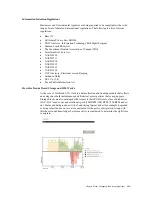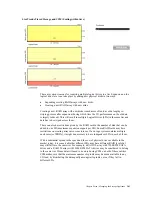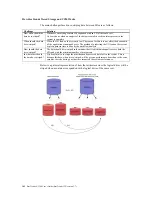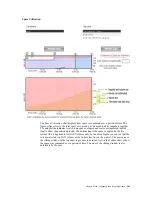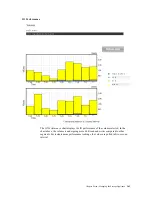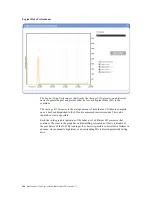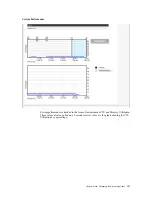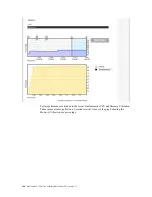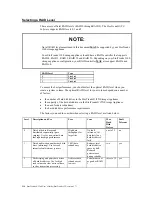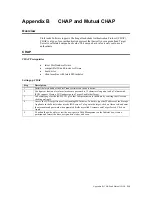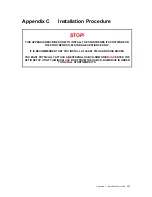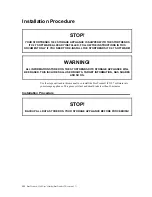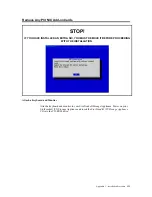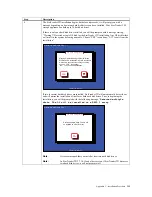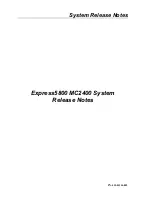
Appendix A : RAID
211
Appendix A
RAID
NOTE:
Not all RAID levels mentioned in this document
MAY
be supported by your StorTrends
1300 storage appliance.
Your StorTrends 1300 storage appliance should have a RAID controller that supports
RAID 0, RAID 1, RAID 5, RAID 10 and RAID 50. Depending on your StorTrends 1300
storage appliance configuration, your RAID controller
MAY
also support RAID 6 and
RAID 60.
Introduction to RAID
RAID (Redundant Array of Independent Disks) is an array of multiple independent hard
disk drives that provide high performance and fault tolerance. A RAID disk subsystem
improves I/O (input/output) performance over a system using only a single hard disk
drive. The RAID volume appears to the StorTrends® server as a single storage unit or as
multiple logical units. I/O is expedited because several hard disk drives can be accessed
simultaneously. RAID systems improve data storage reliability and fault tolerance
compared to single hard disk drive systems. Data loss due to a hard disk drive failure can
be prevented by regenerating missing data from the remaining data and parity
information stored on other hard disk drives in the volume.
RAID Benefits
RAID has gained popularity because it improves I/O performance, and increases storage
subsystem reliability. RAID provides data security through fault tolerance and redundant
data storage.
Improved I/O
Although hard disk drive capabilities have improved drastically, actual performance has
improved only three to four times in the last decade. Computing performance has
improved over 50 times during the same time period. RAID allows you to access several
hard disk drives simultaneously.
Increased Reliability
The electromechanical components of a hard disk drive operate more slowly, require
more power, and generate more noise and vibration than electronic devices. These factors
reduce the reliability of data stored on a hard disk drive. RAID systems improve data
storage reliability and fault tolerance compared to single hard disk drive systems. The
additional hard disk drives make it possible to prevent data loss from a hard disk drive
failure. You can regenerate missing data from the remaining data and parity stored on
other hard disk drives in the volume.
Summary of Contents for ManageTrends 2.7
Page 18: ...StorTrends 1300 User s Guide StorTrends iTX version 2 7 xviii...
Page 24: ...StorTrends 1300 User s Guide StorTrends iTX version 2 7 6...
Page 33: ...Chapter Two Chassis Set Up 15 Accessing the Inside of the System...
Page 60: ...StorTrends 1300 User s Guide StorTrends iTX version 2 7 42...
Page 64: ...StorTrends 1300 User s Guide StorTrends iTX version 2 7 46...
Page 70: ...StorTrends 1300 User s Guide StorTrends iTX version 2 7 52...
Page 100: ...StorTrends 1300 User s Guide StorTrends iTX version 2 7 82...
Page 106: ...StorTrends 1300 User s Guide StorTrends iTX version 2 7 88 Control Panel...
Page 236: ...StorTrends 1300 User s Guide StorTrends iTX version 2 7 218...
Page 256: ...StorTrends 1300 User s Guide StorTrends iTX version 2 7 238...
Page 277: ...Appendix E Replication Overview 259 Snap Assisted Replication Navigating with ManageTrends...
Page 281: ...Appendix E Replication Overview 263 Replication SAR view Primary Box SAR view Secondary Box...
Page 285: ...Appendix E Replication Overview 267 After Failover Operation in Secondary Box...
Page 300: ...StorTrends 1300 User s Guide StorTrends iTX version 2 7 282...
Page 308: ...StorTrends 1300 User s Guide StorTrends iTX version 2 7 290...
Page 330: ...StorTrends 1300 User s Guide StorTrends iTX version 2 7 312...
Page 356: ...StorTrends 1300 User s Guide StorTrends iTX version 2 7 338...



